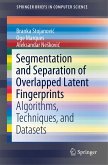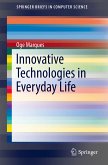
Broschiertes Buch
Algorithms, Techniques, and Datasets
1st edition 2019
8. November 2019
Springer / Springer International Publishing / Springer, Berlin
978-3-030-23363-1
| eBook, PDF | 40,95 € |

eBook, PDF
30. September 2016
Springer International Publishing
Broschiertes Buch
Systems and Solutions
2014
13. Oktober 2014
Springer / Springer International Publishing / Springer, Berlin
86355674
| eBook, PDF | 40,95 € |
Broschiertes Buch
31. Januar 2013
Morgan & Claypool / Springer / Springer Nature Switzerland / Springer, Berlin
978-3-031-01154-2
| eBook, PDF | 27,95 € |
eBook, PDF
22. Oktober 2019
Springer International Publishing
35,30 €**
27,95 €
**Preis der gedruckten Ausgabe (Broschiertes Buch)
Sofort per Download lieferbar
eBook, PDF
31. Mai 2022
Springer International Publishing
eBook, PDF
27. September 2014
Springer International Publishing
Ähnlichkeitssuche: Fact®Finder von OMIKRON
